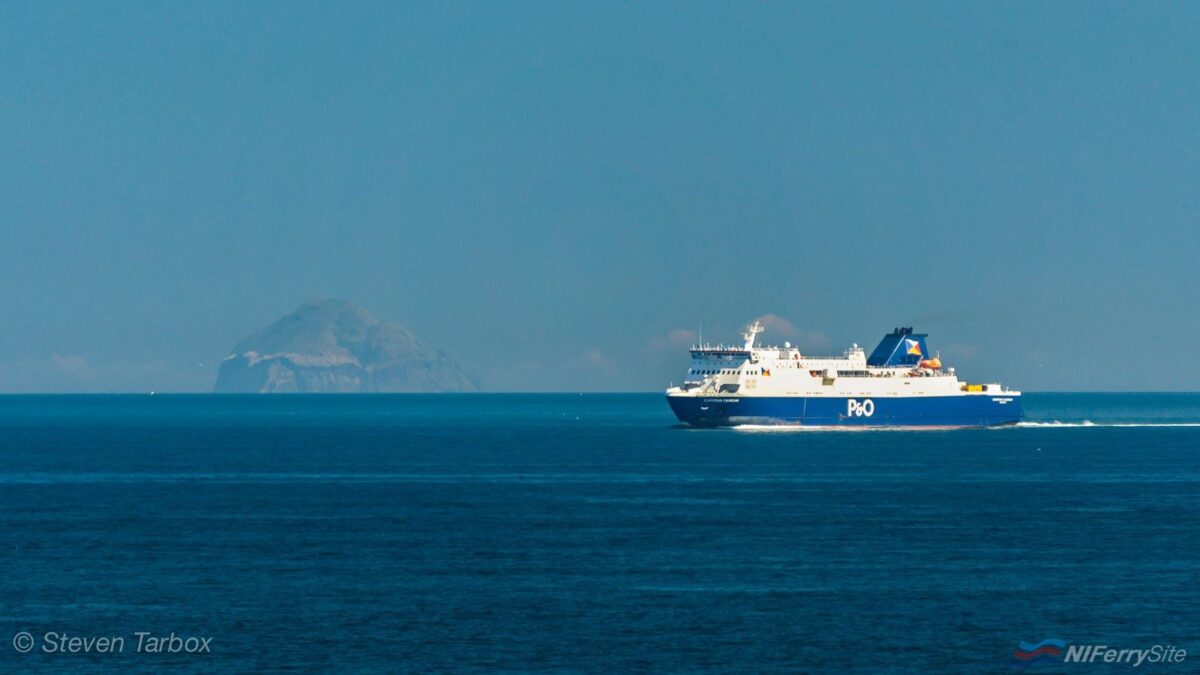P&O Ferries is celebrating fifty years of ferry services between Larne and Cairnryan this week. On 10 July 1973 the Atlantic Steam Navigation (ASN) vessel IONIC FERRY left Larne for Cairnryan on the first commercial crossing between the two ports. Larne native Captain William Close was at the helm.
Celebrations took place both ashore in Larne and onboard this week. Commenting on reaching the milestone, P&O Ferries’ CEO Peter Hebbelthwaite said:
“We are thrilled to celebrate the 50th anniversary of the Larne-Cairnryan route, a remarkable milestone for P&O Ferries, our teams on both sides of the Irish Sea, and the local community,”
”Larne-Cairnryan has been instrumental in supporting economic growth, connecting people, and creating opportunities in Northern Ireland and Scotland. We are immensely proud of this longstanding commitment and look forward to many more years of providing our passengers and freight customers with exceptional service.”
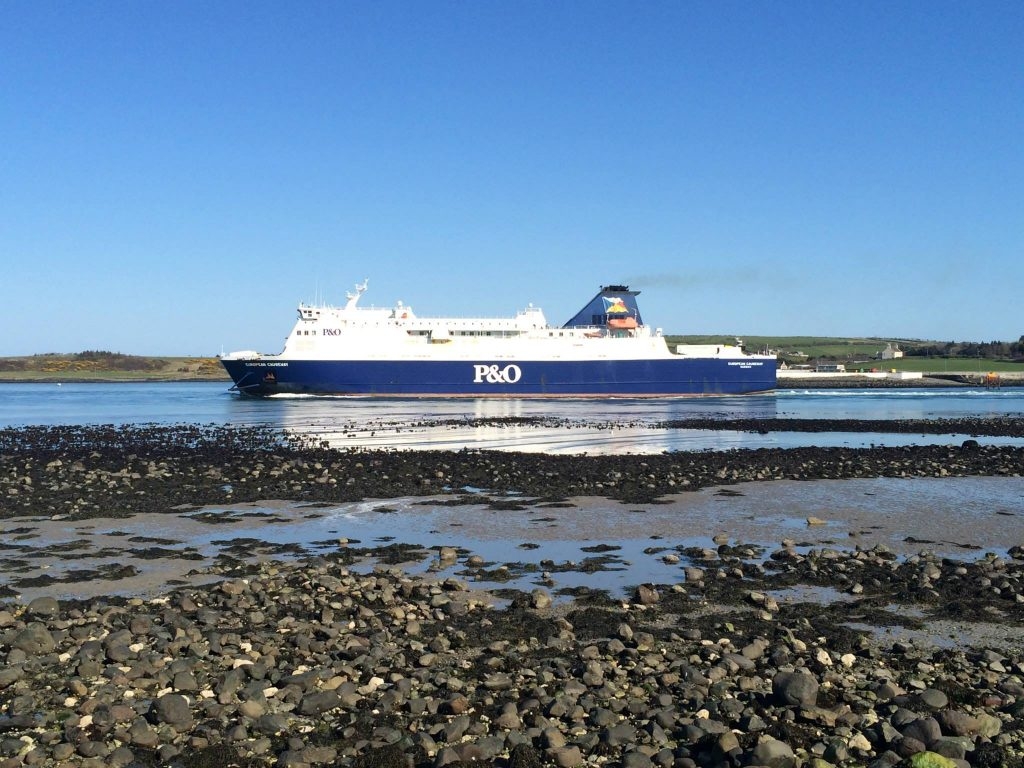
Former Military Port
Despite the Larne to Preston service of the Atlantic Steam Navigation Company initially being extremely successful, even spurring a second route between Preston and Belfast, the route had become loss-making by 1973. Though ASN ran the services, they were usually marketed as the Transport Ferry Service.
ASN had identified the need to move to a new port in Great Britain. This was in part due to the need for ships to navigate the relatively narrow and shallow River Ribble to the tidal port at Preston.

In 1964, ASN had purchased 10 acres of waterside land at the lighterage wharf in the former military port at Cairnryan. It would be almost a decade, however, following the nationalisation and re-privatisation of the company, before the land would be used for a ferry service.
ASN had been taken over by the European Ferries Group when the company was re-privatised in 1971. European Ferries traded under the Townsend Thoresen banner and already had numerous ferry services linking Great Britain with Continental Europe.
The new owners were keen to explore opportunities to expand ASN’s services and saw the potential of using Cairnryan instead of Preston to shorten the route. This would allow them to increase frequency and capacity, while the use of a non-tidal port would increase reliability. Before the service could begin facilities had to be built at Cairnryan and the former Preston vessel IONIC FERRY was modified to carry more passengers.
A further development came in October 1973 when European Ferries Group acquired Larne Harbour Limited. This meant the group now owned both ports. The Preston to Belfast service was closed on 29 July 1974.
From one ship to two
European Ferries Group decided to move larger tonnage to the Cairnryan route in 1974 and transferred the FREE ENTERPRISE III from Dover. This was the first of many former Dover vessels to serve the Larne to Cairnryan route either permanently or in a relief capacity.
Despite significantly improving passenger capacity, FREE ENTERPRISE III was not suitable for the route, however, and so summer 1974 was her first and only season on the route. The ship was found to be slow to turn around even though she was designed for drive-through loading and discharge as freight was accommodated on difficult to load wing decks. FREE ENTERPRISE III also struggled to keep to her advertised 1 hour and 45 minutes crossing time.

For the winter of 1974, IONIC FERRY was joined by her sister-ship BARDIC FERRY which was similarly modified for the route. The FREE ENTERPRISE I, a smaller and older stern only loading vessel which could carry just six freight vehicles, served the route during summer of 1975. IONIC FERRY and BARDIC FERRY were replaced by the DORIC FERRY and FREE ENTERPRISE IV during 1976.
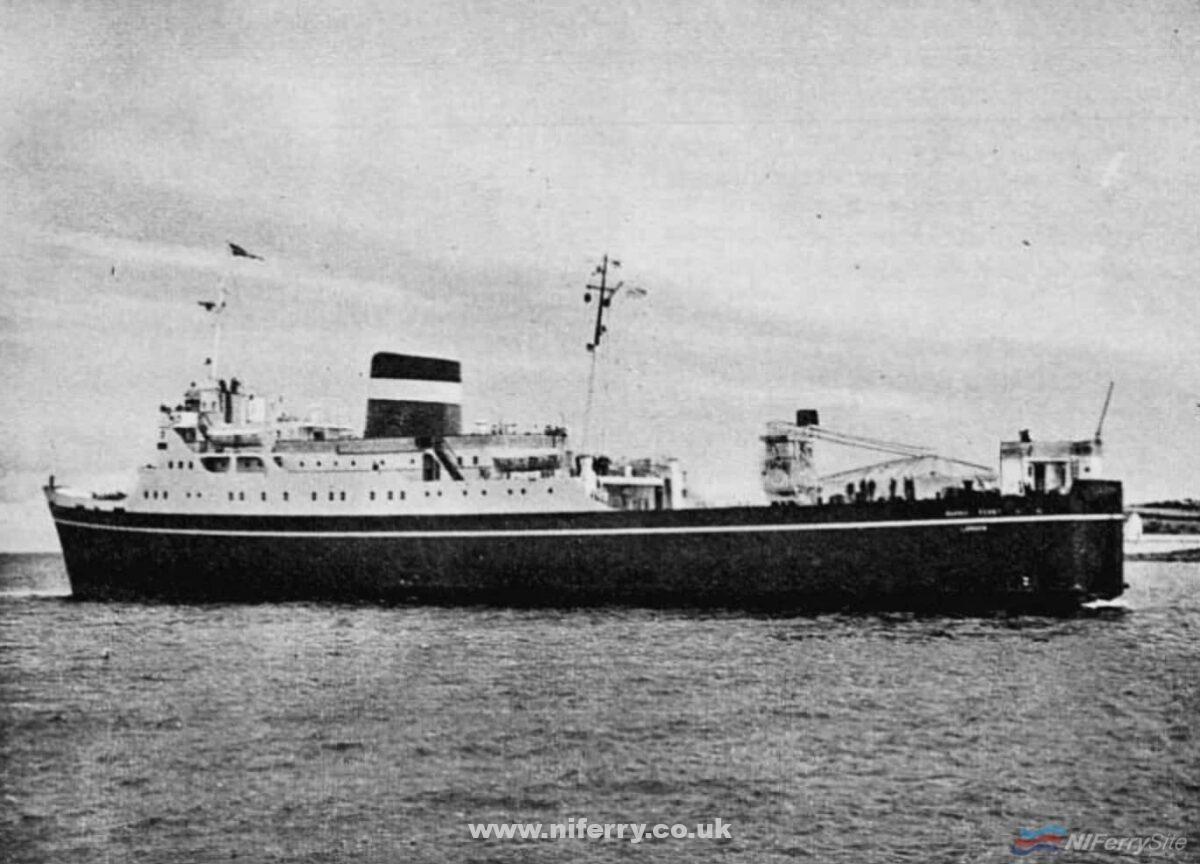
Free Enterprise IV
One of the most successful former Dover vessels was the FREE ENTERPRISE IV which first appeared at Larne during 1976. The ship was the first of a new generation of Townsend Thoresen ferries and proved very popular with passengers during the summer season. Unfortunately the FE IV, as she became known, was not fitted with fin stabilisers. This meant that she was often cancelled during rougher weather conditions. Competitor Sealink had fin stabilisers fitted to its ships and so often sailed when FE IV didn’t.
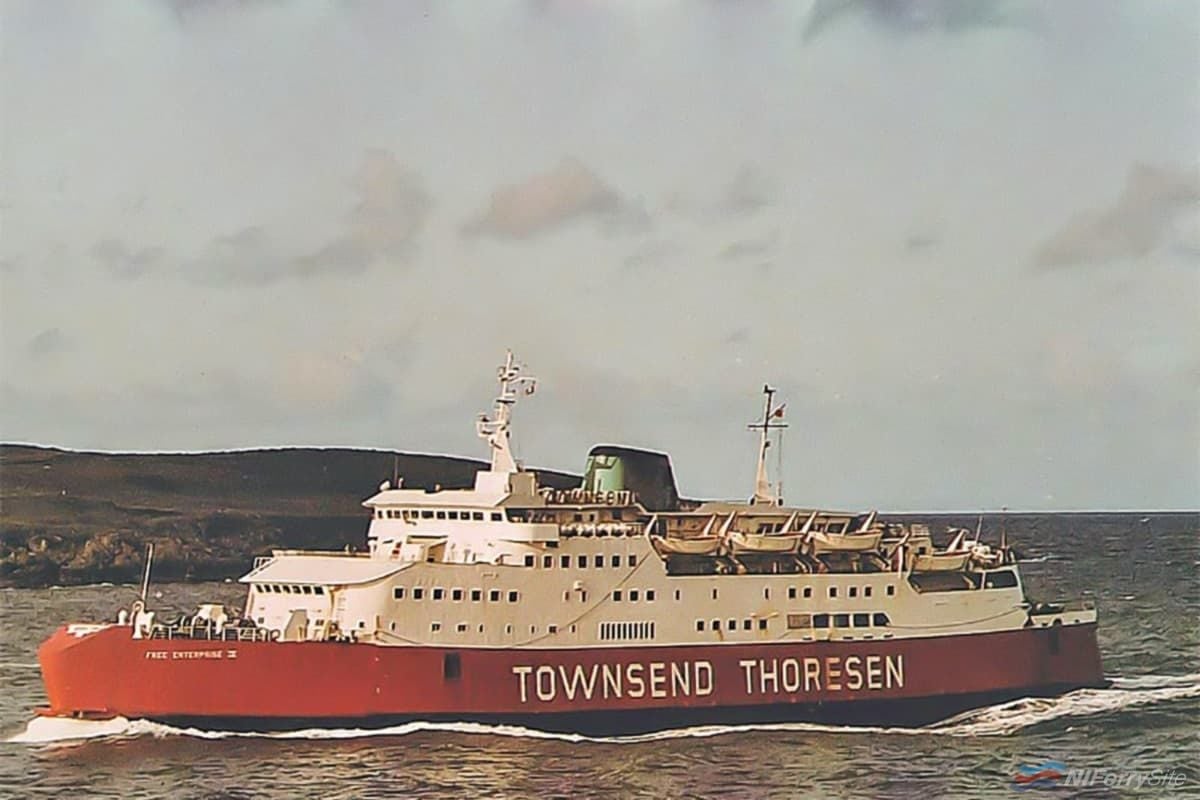
FREE ENTERPRISE IV would be a frequent fixture on the Larne to Cairnryan route until 1986 when she was moved to the Dover to Boulogne route to sail opposite her sister-ship FREE ENTERPRISE V. This was part of a major fleet reshuffle at Townsend Thoresen. When not sailing on Larne to Cairnryan, FE IV had usually worked on the Felixstowe to Zeebrugge route. The Felixstowe operation shared the same management team, still technically the Atlantic Steam Navigation Company.

Double level loading
Another successful former Dover vessel was found in the five year old European class freighter EUROPEAN GATEWAY. The ‘Gateway joined the Cairnryan route as a relief vessel for spring 1980. This followed the installation of a new double-decked linkspan at Cairnryan earlier in the year.

Larne also had doubled-decked linkspans following the redevelopment of the Chaine Quay and Continental Quay in 1978 and 1979. When it opened on 27 June 1978, Chaine Quay had the first twin level loading ramp on the Island of Ireland.

The new linkspans were designed to significantly speed up the loading and discharge of ferries with double vehicle decks. Both levels of traffic could now access the shore simultaneously. Previously double level vessels connected to the shore at the lower level only. Internal ramps or lifts we used to transfer vehicles to and from the upper vehicle deck.
EUROPEAN GATEWAY was lengthened and additional passenger accommodation added in Amsterdam towards the end of 1980. This was ahead of a permanent move to Larne in place of DORIC FERRY which was sold in 1981. Her time on the route was short lived, however. While providing overhaul cover on the Felixstowe – Rotterdam service in December 1982, EUROPEAN GATEWAY collided with the Sealink freighter SPEEDLINK VANGUARD off Felixstowe resulting in six fatalities. The heavily damaged ship was sold after salvage and rebuilt by Greek interests.
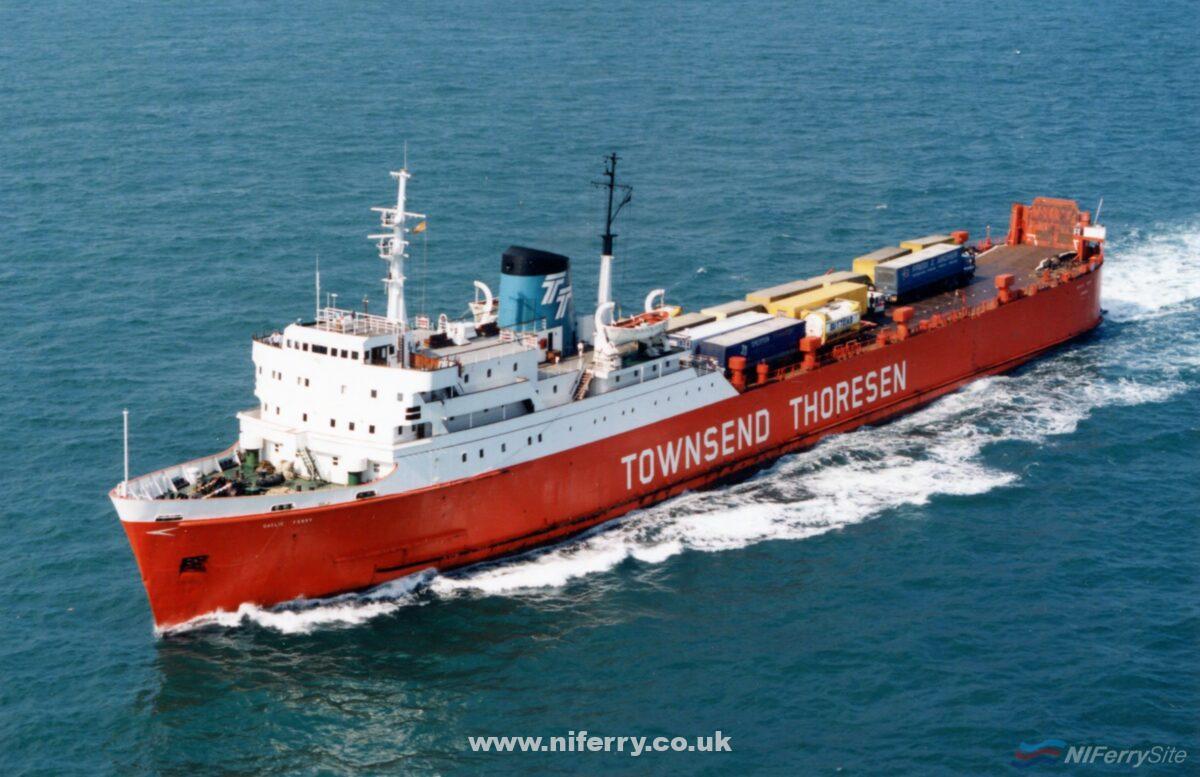
The former ASN vessel GAELIC FERRY had released EUROPEAN GATEWAY at Cairnryan to cover at Felixstowe. This arrangement was extended following the loss of the ‘Gateway until March 1983 when she was replaced with the larger EUROPIC FERRY. GAELIC FERRY also provided winter overhaul cover on the route during 1984.
From Townsend Thoresen to P&O
In 1986 a new passenger terminal was opened at Larne Harbour next to the newly renovated Larne Harbour railway station. This replaced a smaller structure which was located by the Mail Quay.
The Mail Quay was redeveloped with a twin level linkspan and renamed the MacKean Quay in 1987. The former terminal building remains next to the ramp at the Chaine Quay. It is now known as he MacKean Logistics Centre and home to P&O Ferrymasters’ offices amongst others.

For 1986 Townsend Thoresen transferred the IONIC FERRY (ii) to the Cairnryan route as a replacement for FREE ENTERPRISE IV. IONIC FERRY (ii) was built for the P&O Normandy Ferries Southampton to Le Havre route as DRAGON. She had become surplus on the channel after European Ferries Group acquired P&O’s channel ferry operations. IONIC FERRY (ii) was modified at Glasgow to increase her freight capacity by removing cabins ahead of taking up service at Larne.
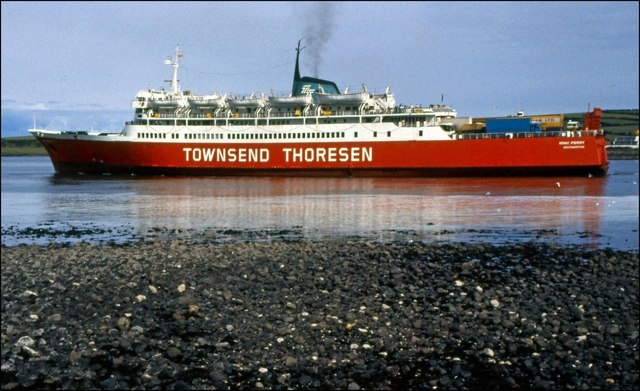
In late 1986 IONIC FERRY (ii) became a P&O owned ship again after the company completed a full takeover of European Ferries Group.
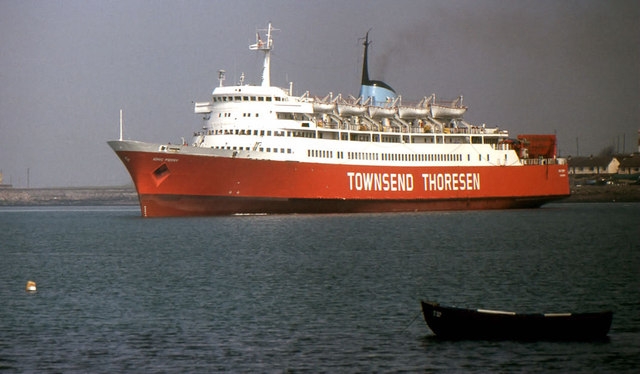
During January 1985 P&O had sold its Normandy Ferries operation to European Ferries Group, but following financial issues at EFG unrelated to the ferry operation P&O had taken a controlling interest in EFG during January 1986. On 5 December 1986 P&O took full ownership of the European Ferries Group and its subsidiary ferry and port operations.

IONIC FERRY (ii)’s usual running mate throughout her time on the route was EUROPIC FERRY. This was the newest, largest and fastest of the former ASN ferries. EUROPIC FERRY had joined the route during 1983 in place of GAELIC FERRY. While smaller from a passenger perspective than her running mates, EUROPIC FERRY proved very useful for freight and was able to accommodate high sided loads on her large weather deck unlike other vessels on the North channel routes.

Towards the end of 1987, the P&O livery started to appear on the Larne to Cairnryan route for the first time. At first just the funnels were repainted in P&O colours, but during the 1988 overhaul periods the orange hulls of Townsend Thoresen were replaced with P&O European Ferries’ new dark blue colour scheme.

Jumbo ferries from Dover
On the final day of 1991, P&O European Ferries closed its Dover to Zeebrugge ferry route to passengers ahead of the introduction of the new Super European Class freighters on the route. This released the “jumboised” Free Enterprise class ferries PRIDE OF WALMER and PRIDE OF SANDWICH for use elsewhere.
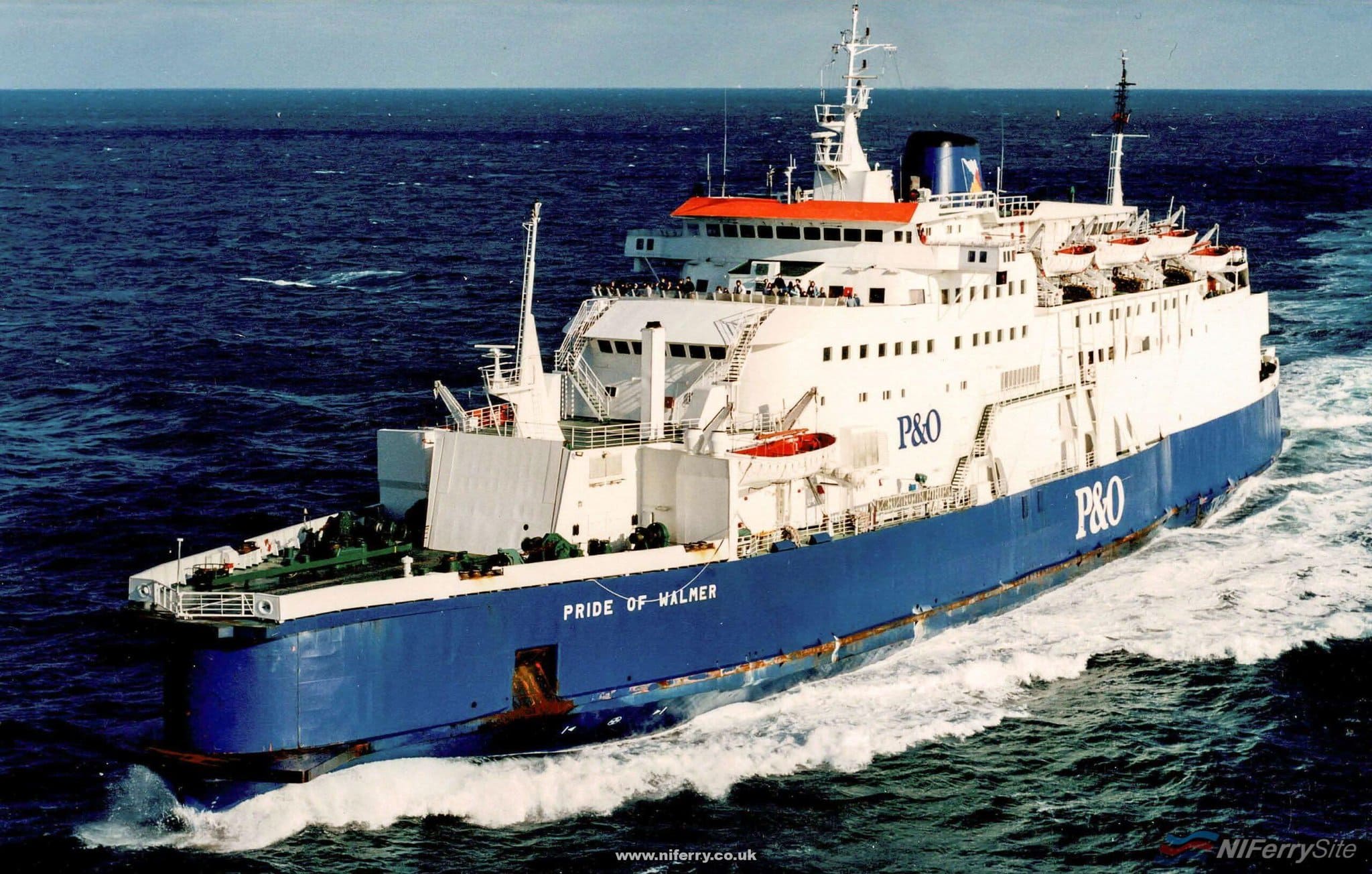
PRIDE OF WALMER, renamed PRIDE OF RATHLIN, replaced IONIC FERRY (ii) on the Cairnryan route on 11 June 1992. PRIDE OF AILSA (ex PRIDE OF SANDWICH) had already joined the route on 13 March. While based on the design of FREE ENTERPRISE IV, these ships had been built with fin stabilisers and better machinery than the older vessel. The EUROPIC FERRY was renamed EUROPEAN FREIGHTER during March 1992 and was retained on the route until April 1993.

For the first time the Larne to Cairnryan route had two identical passenger and vehicle ferries. P&O could now seriously challenge the rival Stena Sealink operation to Stranraer.
Though not the most aesthetically pleasing of vessels following their rebuilding with a second freight deck in 1985/6, PRIDE OF RATHLIN and PRIDE OF AILSA were a case of the right tonnage at the right time. Consequently, the Larne to Cairnryan route continued to grow throughout the 1990’s.

A third ship was added to the route in 1995 in the form of the European class freighter EUROPEAN ENDEAVOUR. Such was the business on the route that there were up to 4 ropax ships on the route in the late 90s. Other ships to appear on the route in this period included the EUROPEAN TRADER, EUROPEAN PATHFINDER, MERCHANT VENTURE and EUROPEAN NAVIGATOR.
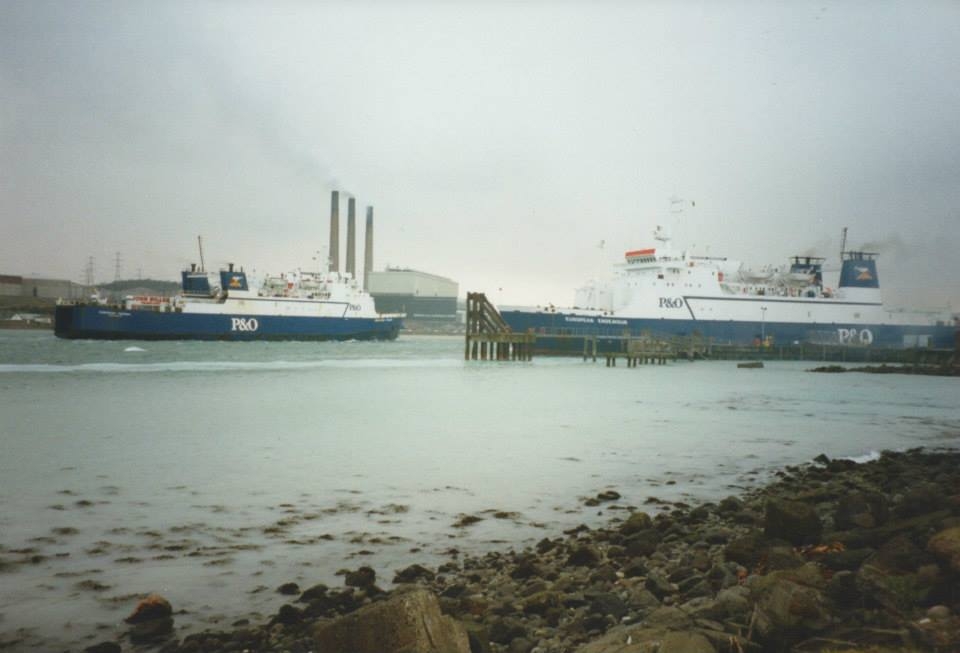
In 1996 the route’s first fastcraft arrived in the form of the monohull JETLINER. The arrival of JETLINER allowed the PRIDE OF AILSA to be sold. Though often technically challenged, JETLINER could complete the crossing between Larne and Cairnryan in just 60 minutes. This was a time that competing services from Stena Line, which had relocated from Larne to Belfast, and SeaCat could not compete with.
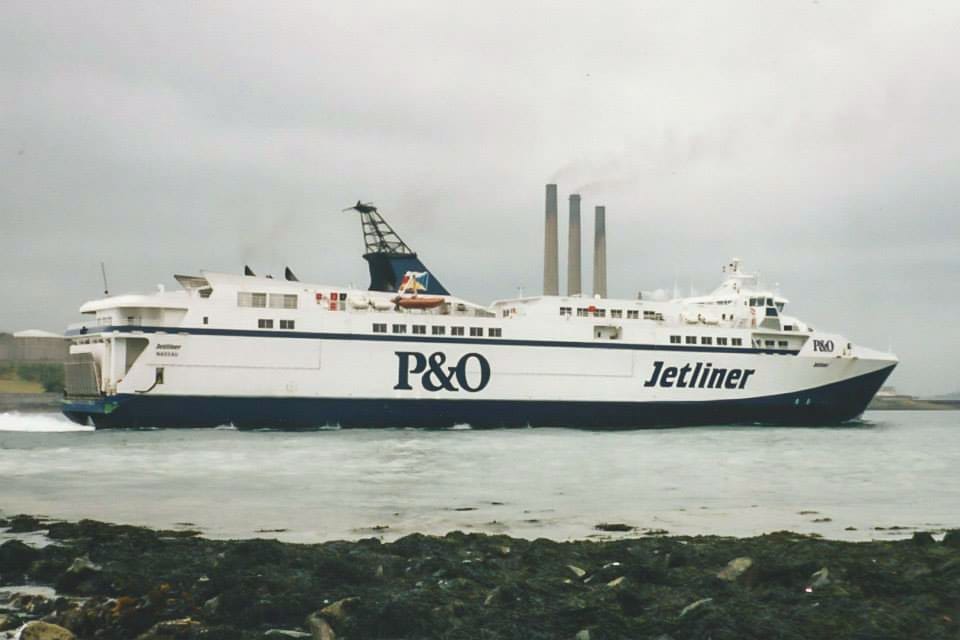
Purpose-built ferries
For 2000, P&O replaced JETLINER with the larger Austal-built catamaran SUPERSTAR EXPRESS which stayed with the company until 2004. For her final season SUPERSTAR EXPRESS sailed to Troon as well as Cairnryan. With fast craft competition from both Stena Line and SeaCat on the rival Belfast to Stranraer route, P&O saw an opportunity to sail to Troon which was much better connected to Glasgow than the Loch Ryan Ports.
P&O redeveloped the port at Cairnryan ahead of the arrival of SUPERSTAR EXPRESS and a new terminal was constructed as part of the £4.5m investment.

One of the most significant events in the 50 year history of the Larne to Cairnryan ferry route was the arrival of the first purpose-built tonnage on the route. During February 1999 P&O European Ferries announced that it had ordered two purpose-built Ro-Pax vessels from Mitsubishi in Japan. The first of these was for the Larne to Cairnryan route while the second vessel was for the Liverpool to Dublin route.

The new EUROPEAN CAUSEWAY replaced PRIDE OF RATHILIN on the Larne to Cairnryan route in August 2000. The new ferry quickly proved a hit with the company and the travelling public.
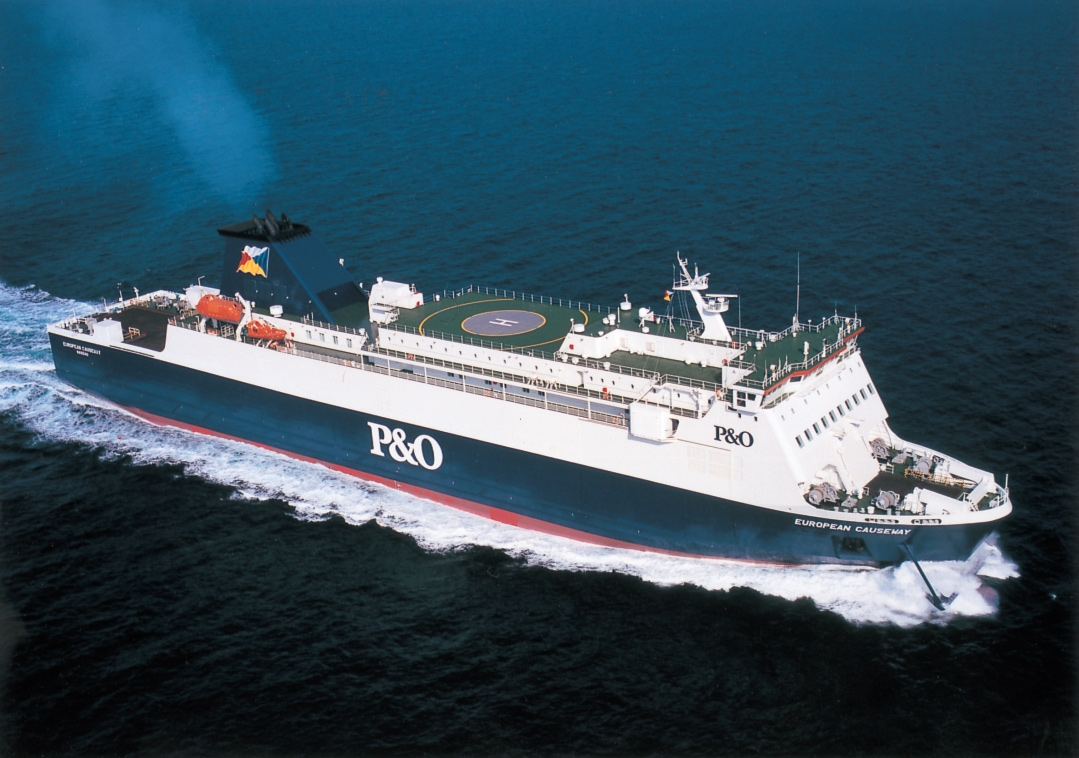
P&O was so impressed that three months after the introduction of the ‘Causeway, a slightly longer near sister-ship was ordered from the same shipyard.

EUROPEAN HIGHLANDER was delivered two years later with some design changes based on the early feedback from using EUROPEAN CAUSEWAY in service. The arrival of the EUROPEAN HIGHLANDER saw the end of the older freighters EUROPEAN ENDEAVOUR and EUROPEAN PATHFINDER on the route.
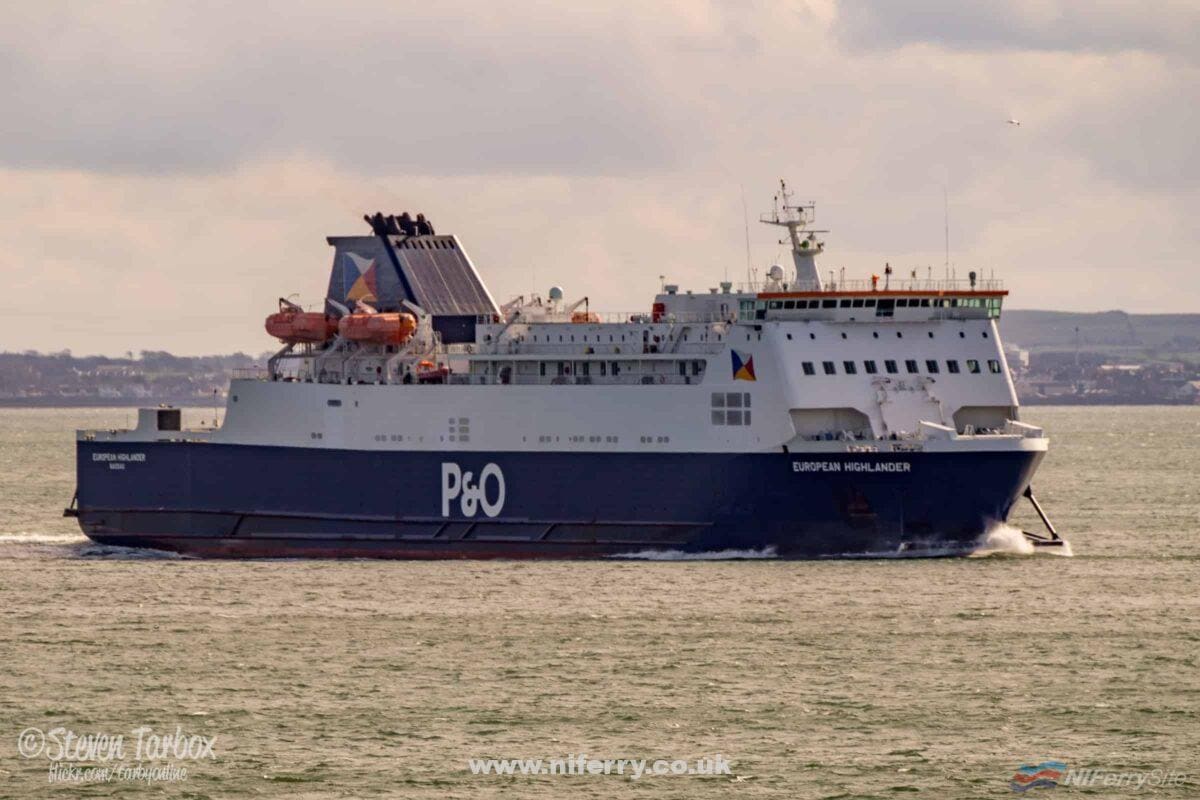
For 2005, P&O moved the chartered EXPRESS to be the fastcraft on the Larne to Cairnryan service. This followed the closure of their Portsmouth routes, meaning EXPRESS was spare. As with SUPERSTAR EXPRESS the previous year, EXPRESS sailed to both Cairnryan and Troon. The same pattern continued every summer until 2013, when the Cairnryan round trip was dropped. EXPRESS made her final trip for P&O Ferries in 2015 after which she was sold by her owners.
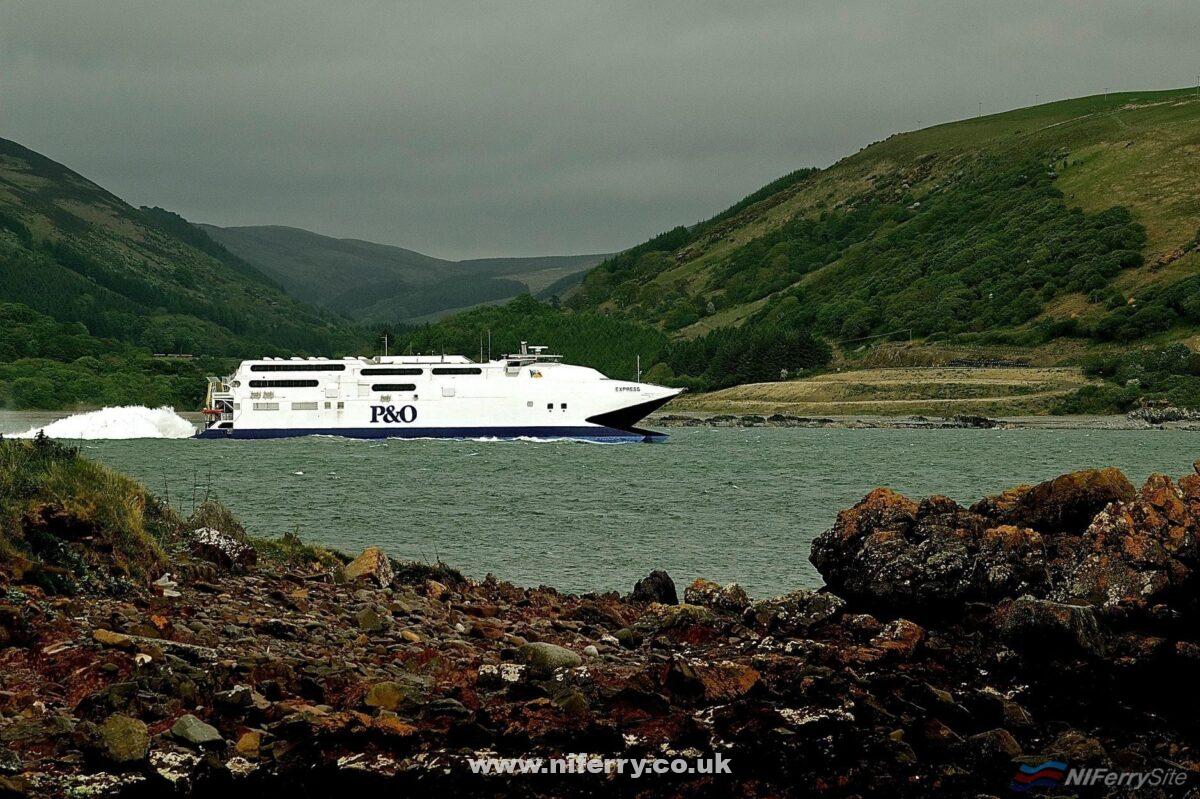
EUROPEAN CAUSEWAY and EUROPEAN HIGHLANDER remain on the Larne to Cairnryan route today and are the longest serving vessels in the history of the service. They have maintained the route solo for over two decades with occasional cover in the form of the EUROPEAN SEAWAY, NORBAY and NORBANK.
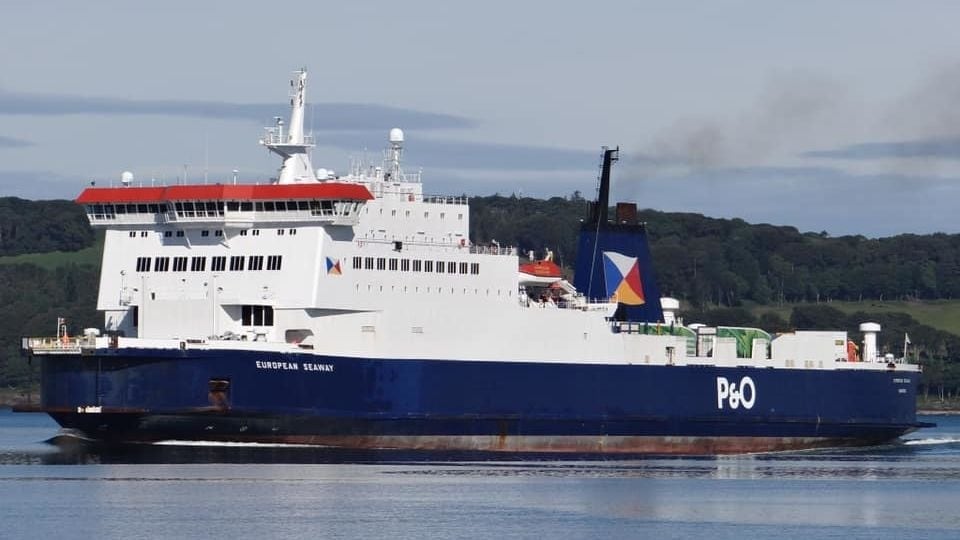
Branding
From 1974 until late 1987 the Larne to Cairnryan ferry route operated under the Townsend Thoresen brand. Some marketing still used Transport Ferry Service branding until about 1976, however. Since 1988, the service has carried the branding of a number of P&O ferry companies though the livery of the ships has remained similar.
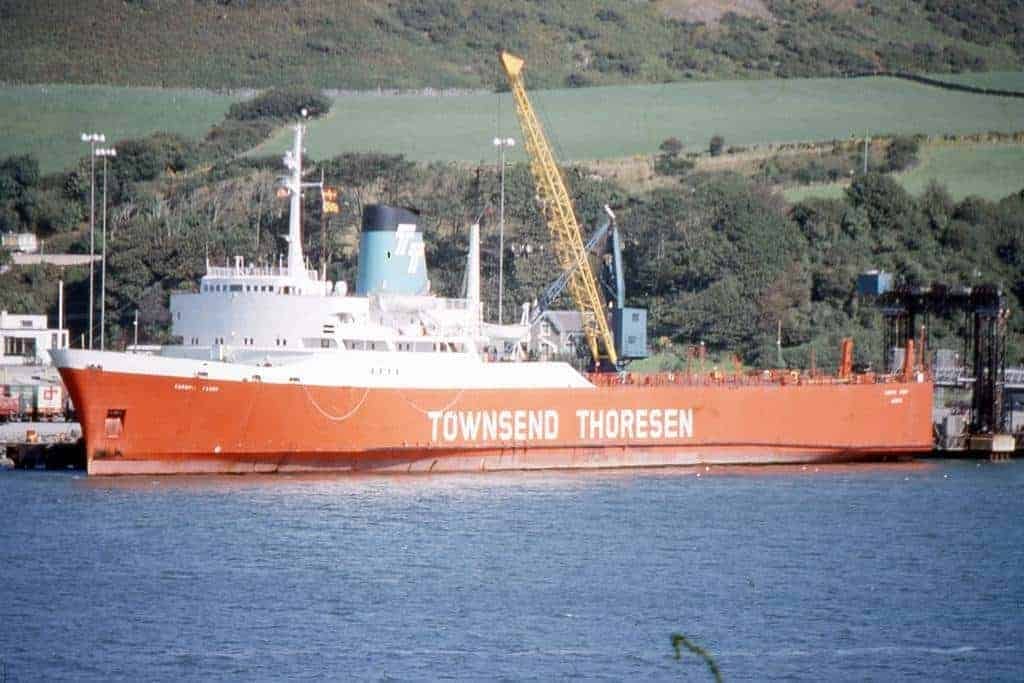
P&O European Ferries was launched on 21st October 1987 but was replaced with P&O Irish Sea in 1998 when the Cairnryan service was merged with the operations of fellow P&O company Pandoro.
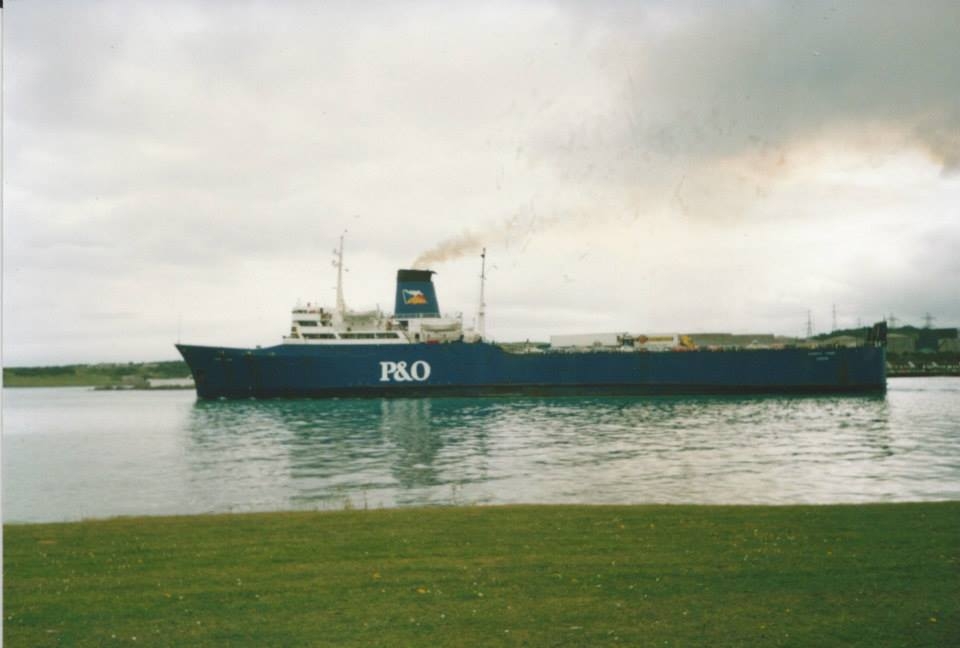
The P&O Group was sold to Dubai-based DP World during 2006. Despite this, the branding remained unchanged until 2010 when the various P&O ferry companies were merged into P&O Ferries.
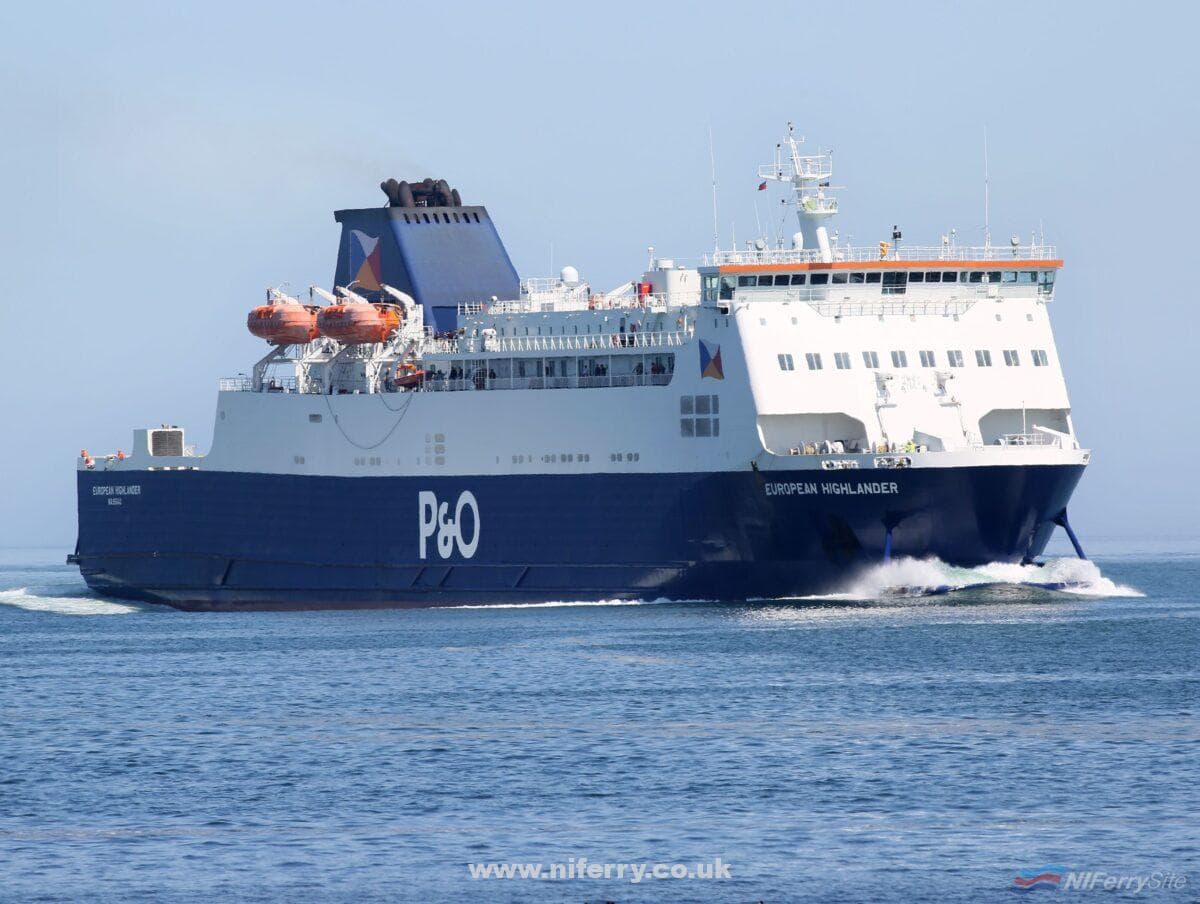
Larne to Cairnryan’s main ferries
| Name | Period | Notes |
|---|---|---|
| IONIC FERRY (i) | 1973 – 1976 | Previously on the Preston – Larne route |
| BARDIC FERRY | March 1974October 1974 – 1976 | Sister to IONIC FERRY |
| FREE ENTERPRISE III | Summer 1974 | |
| FREE ENTERPRISE I | Summer 1975 | |
| DORIC FERRY | 1976 – 1981 | |
| FREE ENTERPRISE IV | May 1976 – July 1986 | Also Felixstowe- Zeebrugge during winter season |
| GAELIC FERRY | November & December 1981December 1982 – March 1983Winter 1984 (overhaul cover) | Replaced EUROPEAN GATEWAY from December 1982 to March 1983 |
| EUROPEAN GATEWAY | March 1980 (overhaul cover)November 1980 – December 1982 | Also provided relief cover at Felixstowe during 1981 and 1982 |
| EUROPIC FERRY | March 1983 – April 1993 | Renamed EUROPEAN FREIGHTER during March 1992 |
| IONIC FERRY (ii) | July 1986 – June 1992 | ex DRAGON |
| PRIDE OF AILSA | 13 March 1992 – 15 June 1996 | ex PRIDE OF SANDWICH, FREE ENTERPRISE VI |
| PRIDE OF RATHLIN | 11 June 1992 – 11 September 2000 | ex PRIDE OF WALMER, FREE ENTERPRISE VII |
| JETLINER | 12 June 1996 – 17 April 2000 | Chartered monohull fast craft |
| EUROPEAN ENDEAVOUR (i) | 1994 (relief)1995 (relief)September 1995 – July 2002 | ex EUROPEAN ENTERPRISE |
| EUROPEAN TRADER | June 1996 – April 2001 | |
| SUPERSTAR EXPRESS | 18 April 2000 – September 2004 | Chartered catamaran, summer only. From 2003 served Troon in addition to Cairnryan. |
| EUROPEAN CAUSEWAY | 14 August 2000 – present | First purpose built ship for Larne to Cairnryan. |
| EUROPEAN PATHFINDER | April 2001 – July 2002 | Replaced EUROPEAN TRADER. |
| EUROPEAN HIGHLANDER | 3 July 2002 – present | A modified version of the EUROPEAN CAUSEWAY. Replaced the freighters EUROPEAN ENDEAVOUR and EUROPEAN PATHFINDER and added additional conventional passenger capacity. |
| EXPRESS | March 2005 – September 2015 | Larne – Troon only from 2013 |
